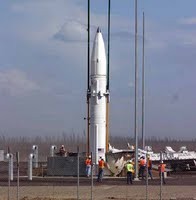At its recent Chicago summit, NATO declared that its new ballistic missile defense (BMD) architecture had achieved “Interim Capability.” Nonetheless, questions persist regarding potential contradictions between missile defense and other NATO goals such as nuclear deterrence, Russian unease regarding the entire BMD project and the alliance’s ability to sustain the necessary expenditures to construct a comprehensive BMD architecture.
In 2010 at Lisbon, NATO committed to making missile defense a core mission within an alliance context. In particular, member governments agreed in principle to integrate their European missile defense programs with those of the United States, with the goal of providing comprehensive protection for NATO member states’ populations, territory and forces. By reducing incompatibilities between the NATO and U.S. BMD systems in Europe, the alliance hopes to reinforce the sense of common trans-Atlantic security and perhaps eventually bolster the U.S. ability to defend North America from long-range missile strikes.
The declaration at Chicago that the alliance’s BMD architecture had achieved “Interim Capability” means that NATO can now in theory intercept a ballistic missile launched by Iran using the early warning radar in Turkey, a NATO command-and-control cell at Ramstein Air Force Base and an Aegis-equipped U.S. Navy destroyer or cruiser deployed in the eastern Mediterranean and dedicated to BMD. In practice, NATO’s “interim capacity” means that the Pentagon has enabled NATO to command and control its radar in Turkey, though the U.S. Navy still retains command over its Aegis-equipped ships, since they have multiple missions in addition to missile defense. The U.S. could also still intercept a missile itself without involving NATO.

